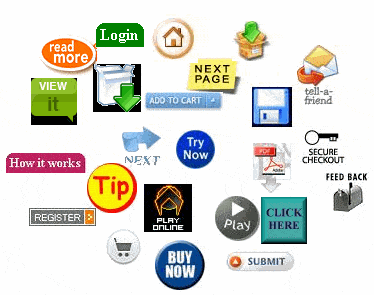Call to action
Surfing is a passive occupation; making people who visit your website perform an action – like e.g. ordering a brochure, watching a video or even checking out the details of a certain product – is a real challenge.
In technical terms, this is referred to as “call to action”, which goes with a few rules. If you follow these rules, you can increase your chances of making visitors perform an action. Internet consultancy bureau Jungle Minds gives a few tips.

This CTA often comes in the form of a button (rectangular, if possible), which must stand out on the site. If several actions are possible on a site, it is better to have those other actions in the form of a text link, so that the button can be reserved for that one action that you want your visitors to perform at all costs.
The colour of the CTA button must of course match the colour palette of your website, but there are specific colours that increase your chances of having visitors click on it. Green, for instance, is not advisable, because it does not stimulate action. Red, on the other hand, is the classical call to action colour, while orange is the ideal colour.
Where to place the button? You must of course make sure that the button always remains in the visible screen area (where you do not have to scroll down). The centre of the page is ideal and, if possible, next to the picture of a product – it is a fact that pictures draw the visitors’ attention. Even better: near the button, include some information that reassures visitors that it is safe to click on the button. This information can pertain to security, returning purchased items and privacy.
What must there be on the button? No generic text such as “click here”, but a clear explanation on what happens when users click on the button. Try to use the imperative form and give the text a temporary edge: “Buy now”, “Order now”, “Request our brochure” or “Order before June 13”.
Those may be details, but they may have a significant impact on your visitors… as well as on your turnover!


